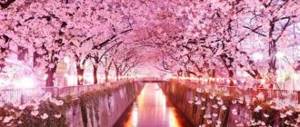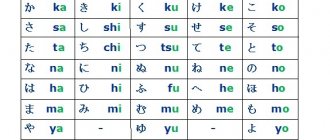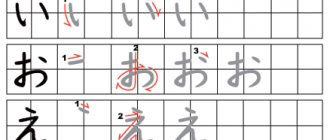Major works of Japanese literature
15 outstanding works of the 8th–20th centuries, known to every Japanese
Author Elena Dyakonova
“Records of Antiquity” (8th century)
Translation: E. Pinus, L. Ermakova, A. Meshcheryakov
Brother and sister, husband and wife, the demiurge gods Izanagi and Izanami rose high on the rainbow bridge, interfered with a spear in the abyss, and a precious drop fell from the spear, which turned into an island; then the gods gave birth to other islands. This is how the cosmogonic myth of Shinto begins, an ancient Japanese religion that appeared long before the arrival of Buddhism on the Japanese islands. The “Records of Ancient Deeds” contains the main myths of Shintoism, for example, the solar myth central to Japan about the goddess Amaterasu, the ancestor of the imperial family. The sun goddess was offended by her violent brother, hid in a cave, and the world became dark. Then the countless kami gods Kami are the deities or spirits of the Japanese Shinto religion. - their “eight hundred myriads” - gather in council and decide how to rescue Amaterasu from the grotto: the rooster sings his song, the goddess of dance dances in long beads and kicks an empty cauldron, the sacred tree is decorated with mirrors, necklaces, and paper strips.
The Records of Antiquity consists of three scrolls.
In the last two, euhemerization occurs - myths and legends turn into historical chronicles. Illustration for the last scene from The Tale of Old Man Taketori. 1650 © Wikimedia Commons
“The Tale of Old Man Taketori” (late 9th - early 10th century)
Translation: V. Markova
The very first Japanese novel, monogatari (literally, “narration of things”). An old woodcutter goes to the mountains and finds a tiny girl in a bamboo trunk, from whom radiance emanates, she is given the name Kaguya-hime. The girl secretly grows up in a woodcutter's family in the distant mountains, the news of her beauty spreads throughout the country, and the emperor falls in love with her. However, the girl is not simple - she is an inhabitant of the moon, exiled to earth for an offense; she has a dress made of feathers, if you throw it on your shoulders, you will forget everything that happened to you. The feathered dress, the dress of oblivion, is the main image of this novel, in which one can still feel the closeness to a fairy tale.
“The Tale of the Beautiful Otikubo” (10th century)
Translation: V. Markova
One of the first Japanese monogatari stories is the story of the Japanese Cinderella, a girl who lived in a tiny closet (otikubo) and married a noble gentleman. Magical motifs are intertwined with a description of the life of a rich estate, where the emperor’s adviser lives, who has many beloved daughters and one unloved one. The unloved daughter is called Otikubo - after the name of the wretched little room where she lives. She has one friend in the house - a maid. Otikubo plays the zither wonderfully and masterfully wields a needle, so that her stepmother forces her to sheathe the entire house. A poor dress with holes, but the ability to write skillful poetry, an unenviable position in the house and gentle beauty. Otikubo feels sorry for his evil father and is very kind to him.
"Ise Monogatari" Ise is the name of a place in Japan, but there is no mention of it in the text. Why the story bears such a title remains a mystery. (10th century)
Translation: N. Conrad
A famous composition in the genre of song storytelling. Perhaps written by one of the most brilliant courtiers of the imperial court and the outstanding poet Ariwara no Narihira, whose enormous talent, beauty, manners, perfection in the art of love conquered more than one generation of art connoisseurs. The narrative is divided into small passages ranging from a few phrases to two or three pages. The center of the passage was a poem - a five-line tanka, and the prose was just a preface and afterword to it.
Murasaki Shikibu. "The Tale of Genji" (11th century)
Translation: T. Sokolova-Delyusina
A huge novel of 54 scrolls, which is the title of the entire Japanese national tradition. It was written by the court lady Murasaki Shikibu - in the Middle Ages people did not believe that such a work could be created by a person. It is difficult to read: you need to remember the many intertwining narrative threads; the language in which it is written is unusually complex. Now the Japanese read The Tale of Genji in modern translations. This is a grandiose canvas about the life and love adventures of the prince - the “brilliant Genji” - the most beautiful man who ever existed. He is handsome with extraordinary beauty, smart, talented in everything, with him the art of love reached extraordinary heights, the feelings of lovers were refined to the limit. The chapter about the death of Prince Genji is not written, there is only the title “Hiding in the Clouds” - this is how the death of a high-ranking person is called in Japan. The Japanese believed that Prince Genji was reborn in future generations - in our time it was believed that Genji was reborn in the guise of the famous kabuki actor Bando Tamasaburo.
Audio!
Course “Japanese Culture in Five Subjects”
Why a Japanese sword is not a sword, how a screen saves you from evil spirits, and why everyone drinks tea from the same cup.
Sei-Shonagon. “Notes at the Headboard” (11th century)
Translation: V. Markova
The first and exemplary work in the essay genre. The Japanese call this genre “following the brush” (zuihitsu) - when the thought can barely keep up with the hand. One of the favorite works of the Japanese, which has given rise to many imitations over the centuries. The writer Sei-Syonagon said: “This book is noteworthy. Note is an observation, an impression. I wrote about everything that passed before my eyes and worried my heart in the silence and solitude of my home.”
This is a plotless collection of observations, precise, sharp, sad and witty, written by the Empress's lady-in-waiting with inimitable skill. Here's an example:
“...What truly moves the soul. A man or woman, young, beautiful, in black mourning clothes. At the end of the ninth or at the beginning of the tenth moon, the voice of a grasshopper is so faint that you think you imagined it. <…> Drops of dew sparkling in late autumn, like multi-colored gems on small reeds in the garden. Wake up in the middle of the night or at dawn and listen to the wind rustling in the river bamboos, sometimes all night long. Mountain village in the snow. Two people love each other, but something gets in their way and they cannot follow the dictates of their hearts. The soul is full of sympathy for them. How the moonlight excites the heart when it sparingly shines through the cracks in the roof of a dilapidated hut. And also the cry of a deer near a mountain village. And also - the radiance of the full moon, highlighting every dark corner in the old garden, entwined with climbing bedstraw.”
Kamo no Chomei. “Notes from a cell” (XII century)
Translation: V. Goreglyad
Another example of the Japanese-favorite “following the brush” genre. “Notes from a Cell” was written by a monk who settled in a hut on the mountainside and lived in solitude all his life. Kamo no Chōmei laid the foundation for the tradition of literary hermits, outwardly ascetic, detached and inwardly focused. Looking from a high mountain, a lonely monk sees with extraordinary clarity everything that is happening in the world, in the capital: natural disasters, famine, earthquakes, but also the feelings of people, the beauty of nature, the bitterness of life. With precious language, in this plotless work he paints the broadest pictures of natural disasters - and next to it is the voice of a cuckoo in a mountain forest, a sparrow’s nest nestled next to a kite, vegetation in a wicker hut.
Nijo. “The Unsolicited Tale” (XIV century)
Translation: I. Lvova (Ioffe)
Written by the Japanese Manon Lescaut, a court lady named Nijo; the narrative is told in the first person and takes place in the house of her father, the state councilor, in the imperial palace, in the monastery, in the capital and its environs. In his early youth, the emperor falls in love with the heroine; he hid his feelings for many years, but the time comes, and he opens up to her: “I remembered the lines from “The Tale of Prince Genji”: “Because of the sovereign’s love, the sleeves were wet with tears...” It’s been a full month. turned white, and I stood, exhausted from tears, seeing off the sovereign...” The emperor’s love is changeable and unreliable, the heroine is going through difficult times; Other gentlemen also fall in love with her, and sometimes she reciprocates their feelings.
“The Tale of the House of Tyra” (XVI century)
Translation: I. Lvova (Ioffe)
A war tale, a samurai tale of a war between two clans - the Taira and the Minamoto, similar to the War of the Roses The War of the Roses - a series of armed dynastic conflicts between factions of the English nobility in the years 1455-1485 in the struggle for power. During it, a large number of representatives of the English feudal aristocracy died. in England. The forces of the warring parties were distributed as follows: in the wild east of the country a huge army of barbarians gathered under the leadership of the Minamoto clan; in the west, in the brilliant imperial capital, is the army of the Taira clan. Victory went to Minamoto. The Minamoto were so strong that trees and grass bent in front of them, the Taira leaned on the imperial court. Rhapsodists - monks with lutes - wandered around Japan, they witnessed the bloody battles of high-born houses (or narrated from the words of witnesses) and sang about exploits and glory in the palaces of the nobility, at crossroads, at temples and sanctuaries. Monks with lutes became extremely popular in a country where the art of storytelling has always been highly valued. A huge number of unaccounted versions of oral stories about the same events have appeared, many versions of folklore origin. There was a belief that stories about battles calmed the souls of dead soldiers.
In the 80s of the 12th century, there were no longer skirmishes, but a full-scale war: the young Emperor Antoku died in the abyss of water, the main villain Taira no Kiyomori died, and their deaths are described as a mythological phenomenon.
Then the ideology and ethics of samurai began to take shape - the idea of unparalleled loyalty, love of death, duty in its highest and purest version. This ideology received its theoretical embodiment much later, in the treatises of the 17th–18th centuries. In “The Tale of the House of Taira,” where the anonymous author collected the most expressive versions of oral stories and added purely literary and philosophical parts of his own, the most important idea for the Japanese tradition is conveyed: the frailty of all things is the law of the universe. Kobayashi Issa © Wikimedia Commons
Issa. Poems (XVIII century)
Translation: V. Markova, T. Sokolova-Delyusina
The poet Issa had a difficult childhood: he was oppressed by an evil stepmother; Poverty and instability haunted him all his life. He always stood up for the small, the weak, and painfully loved everything fragile and short-lived. His simple haiku tercets, short poems of only 17 syllables, are written as if by a child - unhappy and infinitely talented. Here are some examples:
Oh, don't trample, wait! - Fireflies were shining here yesterday night...
Dirt under the nails. It’s somehow awkward in front of green parsley.
There is a lone ribbon on a garbage heap. Spring rain.
Higuchi Ichiyo © Wikimedia Commons
Higuchi Ichiyo. "Peers" (1895)
Translation: E. Dyakonova
The story of a young girl who died of tuberculosis at the age of 24 struck the Japanese reading world at the very end of the 19th century. Having written this story and several short stories, she gained fame as an outstanding master of words. It was called "the fireworks at dusk of Edo. Edo is the old name for Tokyo."
In the dizzyingly long sentences of her narrative, she talks about the amazing, artistic, alluring and scary world of the red light district, where debauchery coexisted with chastity, the corrupt love of beautiful courtesans with the hot and hopeless love of children's hearts. Higuchi Ichiyo was one of the last writers who wrote in the old literary language of bungo; after her, the spoken language was used. But the bungo in her performance sounds unusually modern, in the spirit of twentieth-century prose. Ishikawa Takuboku © Wikimedia Commons
Ishikawa Takuboku. "A Handful of Sand" (1908–1910), "Sad Toy" (1912)
Translation: V. Markova
Ishikawa Takuboku, who died early from tuberculosis, is one of the Japanese’s favorite poets; he wrote romantic poetry in a new style, but became famous for his tanka pentaverses - short poems of 31 syllables. This form has existed in Japan since the 8th century. However, in the twentieth century, this young man, poor, seriously ill, unsettled in life, burdened with a family, managed to breathe completely new strength into it, so that ancient poetry sounded achingly modern. Ishikawa Takuboku called the simple poems his “sad toy” (this is the name of the tanka collection published after his death); they sounded very loudly in the Japanese world, but only after the poet’s death. Here is a poem from A Fistful of Sand:
Oh, how sad you are, Lifeless sand! As soon as I squeeze you in my hand, the rustling is barely audible, and you fall between my fingers.
Junichiro Tanizaki. "Praise of the Shadow" (1934)
Translation: M. Grigoriev
All the novels and stories of this outstanding Japanese writer of the twentieth century are worthy of attention, but I offer readers his essay “In Praise of the Shadow,” in which he draws a comparison between European and Japanese civilizations. Tanizaki's essays are the best reading for anyone who wants to know the real Japan. Here is one of the quotes:
“Europeans, seeing a Japanese living room, are amazed at its artless simplicity. It seems strange to them that they see nothing in it but gray walls, undecorated. Perhaps for Europeans such an impression is quite natural, but it proves that they have not yet solved the mystery of the “shadow”. Our living rooms are designed so that the sun's rays penetrate into them with difficulty. <…> We let the reflected light from the garden into the room through paper sliding frames, as if trying to let the weak daylight only sneak into our room. The element of beauty in our living room is none other than this filtered, dim light. In order for this powerless, lonely, unfaithful light... to find its peace here and be absorbed into the walls, we deliberately give the sandy plaster of the walls a color of dim tones.”
Yukio Mishima. "Golden Temple" (1956)
Translation: G. Chkhartishvili
A shocking, brilliantly written novel by one of the most amazing writers of the twentieth century. Mishima wrote a huge number of works - novels, plays, essays, was fond of photography and organized world exhibitions of his works, conducted symphony orchestras, earnestly worked on his body, which over the years acquired ideal shapes and began to resemble Greek statues. He staged a putsch, the defeat of which became an excuse to commit ritual suicide - hara-kiri (it would be more correct to say “seppuku”).
The Golden Temple, his most famous novel, is based on a true incident at a Buddhist temple whose building is famous in Japan for its elegant beauty. The small, gilded wooden structure overlooking a tranquil pond is considered an architectural masterpiece and has attracted crowds of beauty lovers for centuries. A novice of this temple burned it to the ground, claiming that it was too beautiful for our world. The ghostly appearance of the Golden Temple in the memories of contemporaries is something more valuable than the temple itself.
Kobo Abe. "Woman in the Sands" (1962)
Translation: V. Grivnin
An amazing story about a humble entomologist searching for insects in a remote area on the seashore among the dunes. He finds himself in an unfamiliar village, where the inhabitants huddle at the bottom of huge sand pits, where it is easy to go down and from where it is impossible to get out. The hero finds himself locked in a hole where a woman lives in a hut - her life consists of fighting sand, an eternal, free-flowing substance that penetrates everywhere. If you stop for a minute, the sand will bury people, buildings, and entire lives. The villagers earn their living by mining sand, and in return they lower food and clothing into the pit. At first, the hero desperately tries to get out of the hole, although he understands that this is impossible. Then he begins to live a strange ghostly life against the background of crumbling sand, gets along with a woman, begins to love her with a strange fluid love. An amazing philosophy of the local residents emerges, built on patriotism and love for this godforsaken place.
Kafka on the Beach, Haruki Murakami
Haruki Murakami is perhaps the most popular Japanese writer today, whose books are published in millions of copies around the world. His works combine a leisurely narrative with a dynamic, twisting plot.
“Kafka on the Beach” is the story of two dissimilar people whose destinies are closely intertwined: a teenager who ran away from home, and the feeble-minded old man Nakata, who can talk to cats and predict the future.
Buy on Litres.ru
Mori Ogai
— Mori Ogai was truly a man of the era of enlightenment. Born in 1862 in Tsuwano, he lived a rather extraordinary life for his era. He was a doctor by training, studied in Germany and rose to the rank of general in the military medical service. He was a participant in the Sino-Japanese and Russian-Japanese wars, but at the same time he also made a huge contribution to the development of modern Japanese literature. In fact, Mori Ogai was one of those authors who founded modern Japanese literature. He was a translator; he translated a huge number of iconic works of European classics from German into Japanese. Some of the most iconic works are “The Dancer” and “The Wild Goose.”
"The Inconsolable" by Kazuo Ishiguro
Ishiguro is often compared to Conrad and Nabokov. At the age of six, he emigrated with his parents to the UK, where he was able to create classic and at the same time authentic works in a non-native language.
The famous pianist Ryder comes to an unnamed European city to perform a concert. All events seem to take place in a dream: the characters wander through internal labyrinths from which there is no way out, do not hear each other, and partially lose their memory. The novel “Inconsolable”, filled with literary and musical allusions, is not easy to read, but incredibly interesting.
Natsume Soseki
— Natsume Soseki is a wonderful author and writer, Akutagawa’s teacher, he was quite actively translated in the Soviet Union. Born 1867. If we talk about Soviet publications, then first of all, I recommend his famous trilogy: “Sansiro”, “The Gate” and “Then”. His first famous satirical novel is “Your Obedient Servant the Cat.” At 23, he entered the University of Tokyo and began studying English. He started writing quite late, making his debut in 1905 after returning from England. This short period of 11 years is called the Soseki years.











